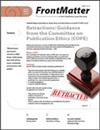社会性伪蝎子的巢结构为群体成员提供了直接的利益,并与蜜蜂的效率相媲美
IF 0.9
3区 农林科学
Q3 ENTOMOLOGY
引用次数: 0
摘要
摘要动物可能会群居筑巢,以尽量减少筑巢所需的能量。Paratemnoides spp. pseudoscorpis独立于所有其他社会群体进化出了社会性,它们的群体创造了丝质的多室巢穴,在那里它们蜕皮和养育后代,在形式上类似于一些黄蜂和蜜蜂的巢穴。在这里,我们描述了这些巢穴,并检查了假蝎子的建造效率。蚕丝通常是能量昂贵的,因此,我们假设P. elongatus筑巢的结构可以最大限度地减少蚕丝的使用,从而最大限度地提高筑巢效率。我们测量了31个鸟巢的巢室数量、周长和面积,计算了鸟巢建筑的几个指标,并开发了五种替代的数学模型来描述其他可能的鸟巢几何形状。我们发现,真实的社会伪蝎子巢穴的建造效率很高,以每内部面积的壁长来衡量,接近数学最优值。我们还发现,与单独建造相同的房间相比,这些巢穴人均使用的蛛丝更少。这表明对小组成员有直接的好处。我们将观察到的巢结构与巢几何的五种数学模型进行了比较,发现伪蝎子的构造效率优于所有非合作模型,并与近似蜂巢猜想的合作模型相媲美——蜂巢猜想是一种描述划分二维平面最有效方法的数学证明。综上所述,社会性假蝎子设计了多个腔室的群体巢穴,以最大限度地减少每个内部面积的壁长,并接近类似蜜蜂的六边形结构的效率。本文章由计算机程序翻译,如有差异,请以英文原文为准。
Social pseudoscorpion nest architecture provides direct benefits to group members and rivals the efficiency of honey bees
Abstract. Animals may build nests socially to minimize the energy required for nest construction. Paratemnoides spp. pseudoscorpions evolved sociality independently from all other social groups, and colonies create silken multi-chambered nests in which they molt and raise young, analogous in form to the nests of some wasps and bees. Here we describe these nests and examine pseudoscorpion construction efficiency. Silk is generally energetically expensive and as such, we hypothesized that P. elongatus build nests of a structure that minimizes silk use, thereby maximizing nest construction efficiency. We measured the number of nest chambers, their perimeter, and their area, for 31 nests, calculated several metrics of nest architecture, and developed five alternative mathematical models describing other possible nest geometries. We found that real social pseudoscorpion nests are constructed with high efficiency, measured as wall length per internal area, approaching that of mathematical optima. We also found that these nests use less silk per capita than if the same chambers were built separately, i.e., if they were solitary. This indicates a direct benefit to group members. We compared observed nest architecture with five mathematical models of nest geometry and found that pseudoscorpion construction efficiency outperformed all non-cooperative models and rivaled that of a cooperative one approximating the honeycomb conjecture - a mathematical proof describing the most efficient way possible to divide a 2-dimensional plane. In summary, social pseudoscorpions design group nests with multiple chambers in a way that minimizes wall length per internal area and approaches the efficiency of honey-bee-like hexagon constructcion.
求助全文
通过发布文献求助,成功后即可免费获取论文全文。
去求助
来源期刊

Journal of Arachnology
生物-昆虫学
CiteScore
2.20
自引率
10.00%
发文量
34
审稿时长
>12 weeks
期刊介绍:
The Journal of Arachnology publishes scientific articles reporting novel and significant observations and data regarding any aspect of the biology of arachnid groups. Articles must be scientifically rigorous and report substantially new information.
 求助内容:
求助内容: 应助结果提醒方式:
应助结果提醒方式:


